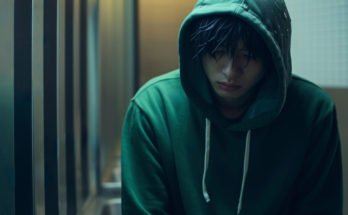Because sometimes, silence is the most powerful setting.
Why Do People Even Want to Hide Their Friend List?
It starts with a feeling.
You accept a new friend request, and suddenly someone else starts snooping “Oh, you know her too?” or “Why is he on your list?”
On platforms like Facebook, visibility can feel like vulnerability. Every connection you make becomes an open thread, and sometimes, that thread unravels into drama, assumptions, or even stalking.
So here’s the big idea:
You don’t need to unfriend people to reclaim privacy. You just need to understand how Facebook’s visibility system works and how to bend it quietly.
What Really Happens When You Hide Your Friends on FB?
Let’s clear something up.
Hiding your friend list doesn’t remove your friends. It just changes who can see that list.
- Your friends still see your posts (unless you say otherwise).
- Your mutual friends are still visible.
- But that full “scrollable directory” of your connections? Gone from public view.
Think of it like flipping your contact book facedown on the table.
It’s still there. Just not for everyone to peek at.
Step-by-Step: How to Hide Your Friends on Facebook
This is easier than most people realize. It just takes a few quiet clicks.
Step 1: Go to Your Facebook Profile
Whether on desktop or mobile, go to your profile and find the Friends section.
You’ll see a small pencil/edit icon in the top right. Click or tap it.
Step 2: Select “Edit Privacy”
This is where Facebook hides the good stuff.
A window will pop up with different privacy settings for:
- Friend list
- Following
- Followers
Under Friend List, click the drop-down.
Step 3: Choose Who Can See Your Friends
Here’s where your control comes in. You’ll see several options:
- Public – Anyone can see your full list
- Friends – Only people you’ve added can see your list
- Only Me – No one else can see it
- Custom – Choose specific people to allow or block
Choose “Only Me” if you want maximum privacy. That’s the digital equivalent of “locked drawer, no key.”
Done.
But What About Mutual Friends?
Here’s the catch.
Even if you hide your full list, mutual friends are still visible. Always.
If A and B are both friends with you, they’ll still see each other in the “Mutual Friends” section even if your list is private.
This isn’t a bug. It’s by design. Facebook assumes that mutual visibility is harmless.
In real life terms: If two people both know you, they’ll probably know about each other anyway.
Still, it’s something to be aware of. Privacy on Facebook is layered, not absolute.
Hiding Friends from Specific People (Yes, It’s Possible)
Let’s say there’s just one person you don’t want snooping on.
You don’t want to block them. You don’t want to unfriend them. You just want… invisibility.
Here’s how you do that.
Option 1: Use the Custom Privacy Setting
When editing your Friend List privacy:
- Select “Custom”
- Under “Don’t share with,” type the name of the person
That one person won’t see your friend list. Everyone else still can if you allow it.
Option 2: Create a “Restricted” List
Facebook lets you create friend groups. Add the snoop to your “Restricted” list.
They’ll still be your “friend,” but they won’t see:
- Your posts (unless set to Public)
- Your detailed activity
- Your friend list (if you’ve hidden it from non-friends)
Think of it as social stealth mode.
How to Test If It’s Working
Privacy settings don’t mean much if you don’t test them.
Here’s how to double-check your setup:
- Go to your profile
- Click the 3-dot menu → “View As”
- Facebook will now show you how your profile looks to the public
- Click on the Friends tab
If it says “No friends to show”, you’ve done it right.
Want to see what a specific person sees? There’s a Chrome extension called “Multiple Tools for Facebook” used responsibly.
Is Hiding Your Friends Considered Suspicious?
Let’s talk about perception.
Some people will notice when they can’t access your friends list. They may assume:
- You’re being shady
- You’re hiding something
- You’re distancing yourself
But here’s the real insight:
Privacy isn’t secrecy. It’s curated.
You’re not hiding to deceive. You’re choosing what parts of your digital identity remain public.
In a world where oversharing is default, curated silence can feel like power.
Why This Matters More in 2025
Friend lists aren’t just lists anymore.
They’re social networks that algorithmically influence:
- What ads you see
- Who gets recommended to whom
- Who ends up sliding into whose DMs
And let’s not ignore the cultural shift.
With the rise of anonymous platforms, secret confession pages, and “close friends only” content, there’s a bigger pattern:
Gen Z doesn’t want everyone knowing everything.
Privacy is the new flex. Mystery is back in style.
But What If You Want to Go Deeper?
Let’s say hiding your friends is just the start.
Maybe you don’t want to broadcast your likes. Or show who you follow. Or leave a digital trail that others can reverse-engineer.
Here are three next-level moves:
- Turn off your Active Status
No one needs to know when you’re online. - Hide your following list
Especially on public figures or brands. - Limit who can see your posts
Use Friends Except… or Custom settings on every post.
The more intentional you are, the less you have to clean up later.
The Bigger Principle: Control What You Can, Quietly
Social media isn’t just about connection anymore. It’s about control.
Every button, every setting, every subtle tweak is a chance to:
- Say “this is mine”
- Draw boundaries without drama
- Protect your peace without performance
Because not every story needs a caption.
Not every connection needs to be visible.
And not every friend needs to know who else is on your list.
The Quiet Tools That Help You Stay Unseen
There’s one more layer to this conversation.
Sometimes, even Facebook privacy settings don’t go far enough.
That’s where anonymous platforms like SecretNote.me come in, tools built for people who want to express themselves without pressure.
At SecretNote, you can:
- Send notes anonymously
- Watch them auto-delete after reading
- Trust end-to-end encryption to keep things private
No profile. No list. No receipts.
It’s the opposite of Facebook and that’s the point.
Final Thought: Privacy Isn’t Paranoia. It’s Precision.
Choosing what to share and what to keep hidden isn’t about fear.
It’s about agency.
You don’t need to delete your profile or disappear from the grid.
You just need to know where the switches are.
And today, you’ve found one.



